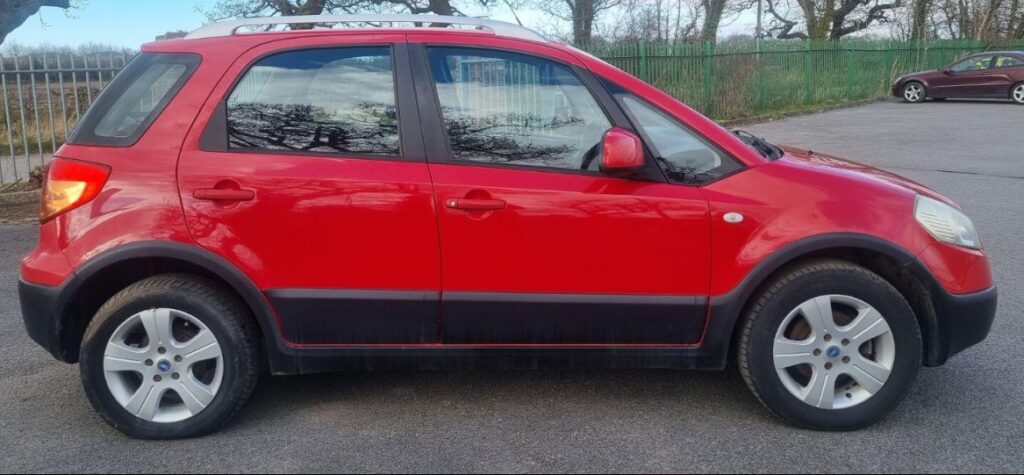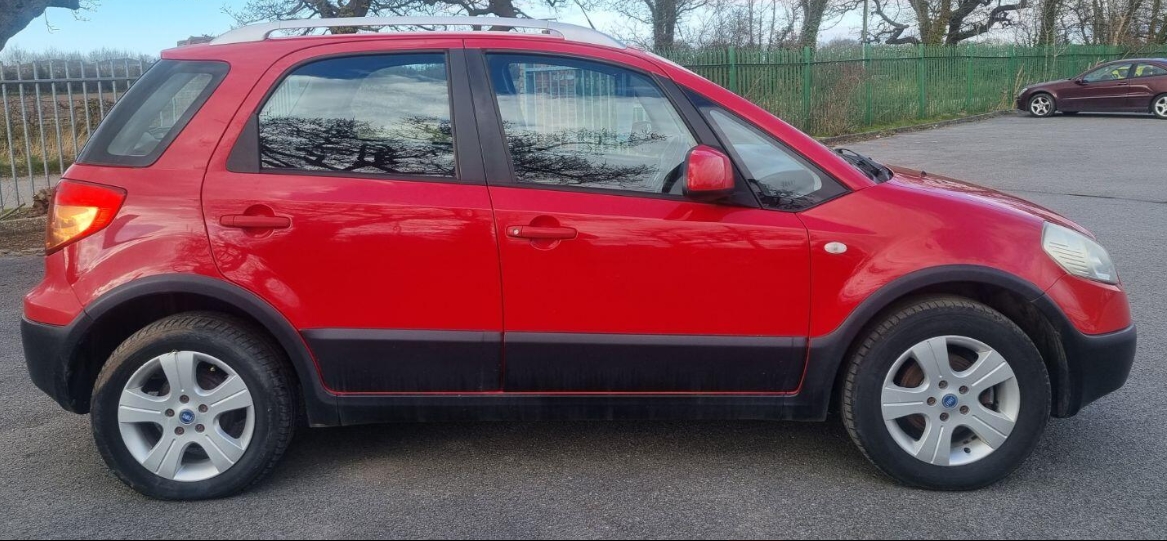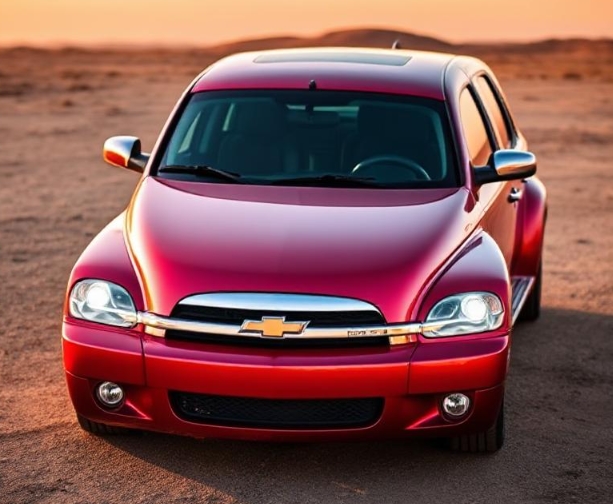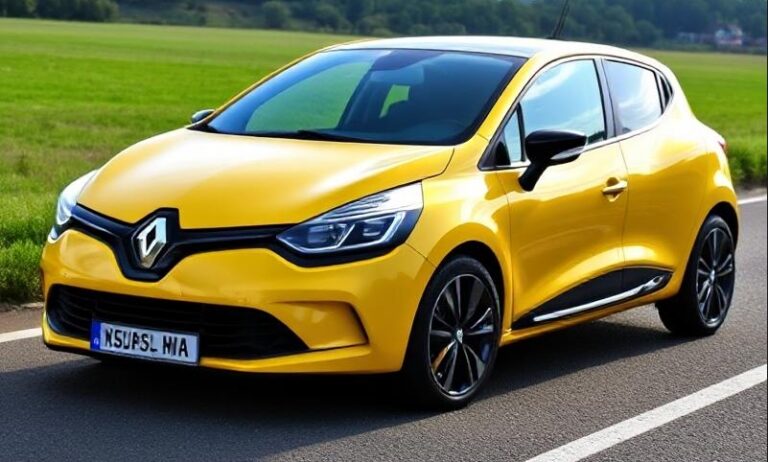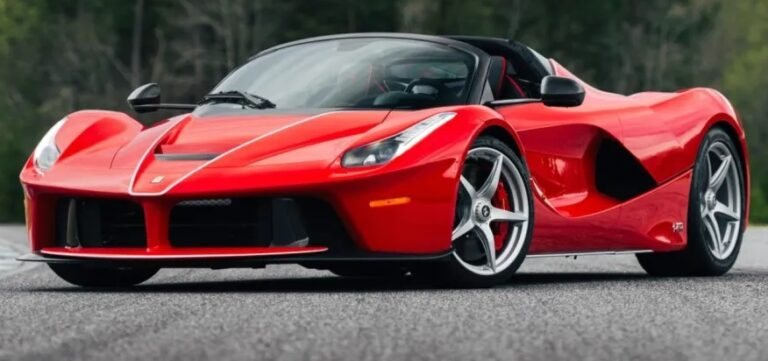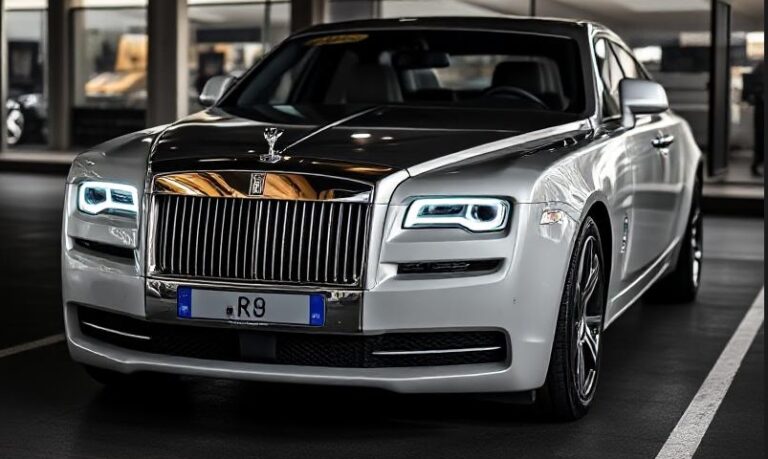The Power of Sixteen: The Evolution of the Fiat Sedici
In the world of automotive design and production, some vehicles are born from a singular, unadulterated vision within a single company. Others are the product of strategic necessity, born from alliances that bridge continents and corporate cultures. The Fiat Sedici falls firmly into the latter category. Often overlooked in favor of its more stylish Italian brethren, the Sedici was a pivotal, pragmatic, and remarkably successful vehicle for Fiat. Its name, meaning “Sixteen” in Italian, was a clever nod to its 4×4 capabilities (4×4=16), a feature that defined its purpose and its place in the market. This is the story of its evolution, from a clever collaboration to an unsung hero of the crossover revolution.
Genesis: A Strategic Alliance and a Market Gap (Pre-2006)
The early 2000s witnessed a seismic shift in consumer preference. The traditional hatchback and saloon were still dominant, but a growing appetite for vehicles with a higher driving position, rugged aesthetics, and the promise of go-anywhere capability was undeniable. The SUV was booming, but these vehicles were often large, thirsty, and expensive. A gap existed for something smaller, more efficient, and city-friendly—what we now call the B-segment crossover or compact SUV.
Fiat, an expert in small city cars, saw this trend but lacked a suitable platform and the resources for a ground-up development of a 4×4 vehicle. Suzuki, conversely, was a world leader in compact all-wheel-drive technology, with a rich heritage in vehicles like the Jimny and Vitara. A partnership was a perfect solution. In 2003, the two automotive giants signed an agreement to co-develop and produce a new compact SUV.
The project was a masterclass in international collaboration. The vehicle would be designed by the legendary Giorgetto Giugiaro at Italdesign in Italy. The engineering and all-wheel-drive system would be heavily influenced by Suzuki’s expertise. The manufacturing would take place at the Magyar Suzuki plant in Esztergom, Hungary. The result would be two mechanically identical but stylistically distinct vehicles: the Suzuki SX4 and the Fiat Sedici. While the SX4 was destined for global markets, the Sedici was primarily aimed at Europe, serving as Fiat’s crucial entry into this burgeoning segment.
The First Generation: The Original Sixteen (2006–2009)
Unveiled at the 2006 Geneva Motor Show and launched shortly after, the Fiat Sedici immediately carved out its identity. Giugiaro’s design was a blend of Italian flair and utilitarian toughness. It featured a high roofline, generous ground clearance, and protective, unpainted plastic cladding on the bumpers, wheel arches, and side sills. The front end was distinctly Fiat, with rounded headlights and a clean grille that set it apart from its Suzuki twin. It was compact enough for urban environments but projected an air of robustness that spoke to its underlying capabilities.
The Sedici’s true genius, however, lay beneath the skin. Its standout feature was the on-demand all-wheel-drive system, controlled by a simple three-mode switch on the centre console:
2WD: Power was sent exclusively to the front wheels for maximum fuel efficiency during normal, dry-road driving.
AUTO: The vehicle operated in front-wheel drive by default, but an electronically controlled clutch would automatically send torque to the rear wheels upon detecting any loss of traction.
LOCK: This mode engaged a permanent 50/50 torque split between the front and rear axles, providing maximum traction for challenging conditions like snow, mud, or steep inclines. It operated at speeds up to 60 km/h (37 mph) before automatically switching back to AUTO mode.
For buyers who wanted the crossover look without the complexity or cost of all-wheel drive, Fiat also offered a more affordable front-wheel-drive version.
Powertrains and Trim Levels (2006–2009)
During its initial production run, the Sedici was offered with a choice of two engines, one sourced from each parent company.
1.6-litre Petrol: A 16-valve Suzuki-sourced M16A engine, producing 107 PS (79 kW) and 145 Nm of torque. It was paired with a 5-speed manual transmission.
1.9-litre MultiJet Diesel: A Fiat-sourced turbodiesel engine renowned for its torque and efficiency. It produced 120 PS (88 kW) and a substantial 280 Nm of torque, making it the powerhouse of the range. This engine came with a 6-speed manual transmission.
The trim structure was straightforward, primarily focusing on two levels: Dynamic and Emotion.
Dynamic: This was the entry-level model. Standard equipment was functional and included ABS with EBD, dual front airbags, remote central locking, electric front windows, a radio/CD player, and manual air conditioning. The 4×4 versions came with the signature three-mode selector. Visually, it was identifiable by its steel wheels.
Emotion: The higher-spec model added a layer of comfort and style. Upgrades over the Dynamic trim typically included 16-inch alloy wheels, front fog lights, roof bars, automatic climate control, a leather-wrapped steering wheel with audio controls, electric rear windows, and body-coloured door mirrors and handles. Side and curtain airbags often became standard at this level, significantly enhancing safety.
The Sedici proved an immediate success, particularly in its home market of Italy, where it consistently became one of the best-selling SUVs. Its combination of compact dimensions, practical interior, and genuine all-weather capability struck a chord with European buyers.
The Mid-Cycle Facelift: A Sharper, Stronger Sixteen (2009–2014)
By 2009, the compact crossover segment was becoming increasingly crowded. To keep the Sedici competitive, Fiat introduced a comprehensive mid-cycle refresh. The changes were more than just cosmetic; they addressed performance, efficiency, and interior refinement.
Visually, the updated Sedici adopted a more contemporary front end. The original simple grille was replaced by a more elegant, chromed design that mirrored the styling of other Fiats of the era, such as the Bravo. The front bumper was redesigned with a more prominent lower air intake and restyled fog light surrounds, giving the car a wider, more planted appearance. At the rear, the changes were more subtle, limited to minor tweaks in the light clusters.
Inside, Fiat addressed criticisms of the original’s hard plastics. While the overall layout remained the same, the materials were upgraded for a higher-quality feel. The instrument cluster was redesigned for better clarity, and the centre console received updated climate and audio controls.
The most significant changes, however, were under the bonnet. The powertrains were thoroughly overhauled to meet tougher Euro 5 emissions standards and to deliver better performance and economy.
1.6-litre Petrol (updated): The Suzuki engine was revised to produce a healthier 120 PS (88 kW), a notable 13 PS increase. Torque also rose slightly to 156 Nm. Despite the power bump, fuel consumption and CO2 emissions were reduced.
2.0-litre MultiJet 2 Diesel: The ageing 1.9 MultiJet was replaced by Fiat’s state-of-the-art 2.0-litre MultiJet 2 engine. This was a major leap forward, boosting power to 135 PS (99 kW) and torque to an impressive 320 Nm. Paired with a 6-speed manual, it offered effortless performance and excellent long-distance cruising ability while being significantly more refined and economical than its predecessor.
Trim Levels and New Additions (2009–2014)
With the facelift, the trim structure was also revised and expanded, often featuring three core levels: Dynamic, Emotion, and a new top-tier Experience.
Dynamic: Remained the accessible entry point, benefiting from the updated styling and engines. Electronic Stability Program (ESP), previously an option, became standard on many models, greatly improving active safety.
Emotion: Continued as the well-equipped mid-range choice, carrying over features like alloy wheels, automatic climate control, and roof bars from the pre-facelift model.
Experience: This new flagship trim elevated the Sedici’s premium appeal. It typically added features such as part-leather upholstery, chrome exterior detailing, privacy glass, and often came with the 4×4 system and the powerful 2.0 MultiJet engine as standard.
Throughout this period, Fiat also occasionally offered special editions in certain markets to maintain sales momentum, such as “Winter” or “Adventure” models that bundled popular options like bespoke floor mats, roof racks, or unique paint colors.
The front-wheel-drive option remained available, primarily with the 1.6 petrol engine, catering to the purely style-conscious crossover buyer.
.
Many car aficionados have multiple hobbies, like boating as well as auto stuff. Those who don’t already own a boat (and even some that do), may have thought about building their own boats. It’s really not as hard as you’d think. Just take a look at these easy boat building plans!

.
End of an Era and Lasting Legacy
Production of the Fiat Sedici continued in Hungary until 2014. By this time, the automotive landscape had changed dramatically. The B-segment crossover market, which the Sedici and SX4 had helped pioneer, was now saturated with highly stylised and tech-focused competitors like the Nissan Juke and Renault Captur.
The Fiat-Suzuki partnership for this model had run its course. Fiat was ready to launch its own, independently developed successor. That successor was the Fiat 500X. While the 500X was a world away in terms of style, drawing its chic, retro-modern look from the iconic Fiat 500, its core concept was a direct evolution of the Sedici’s mission. It was a compact vehicle with a high driving position, offering both front-wheel-drive and all-wheel-drive variants to appeal to a broad range of customers.
The Fiat Sedici was never the most glamorous car to wear the Fiat badge. It was a vehicle born of pragmatism, a clever tactical move to plug a critical hole in the company’s lineup. Yet, its legacy is undeniable. It was a reliable, capable, and honest car that gave Fiat a strong foothold in a segment that would come to dominate the industry. It was the proof-of-concept that demonstrated a real market demand for a small, versatile Fiat crossover, paving the way for the global success of the 500X. The “Sixteen,” in its quiet, unassuming way, was one of the most intelligent and important cars Fiat produced in the 21st century.
